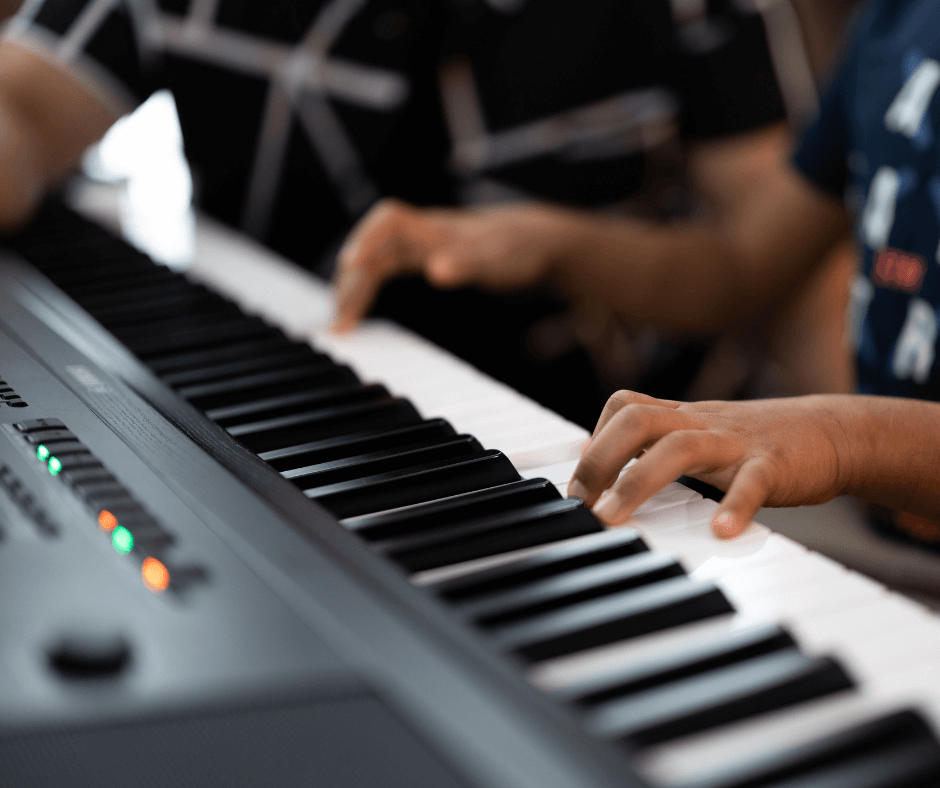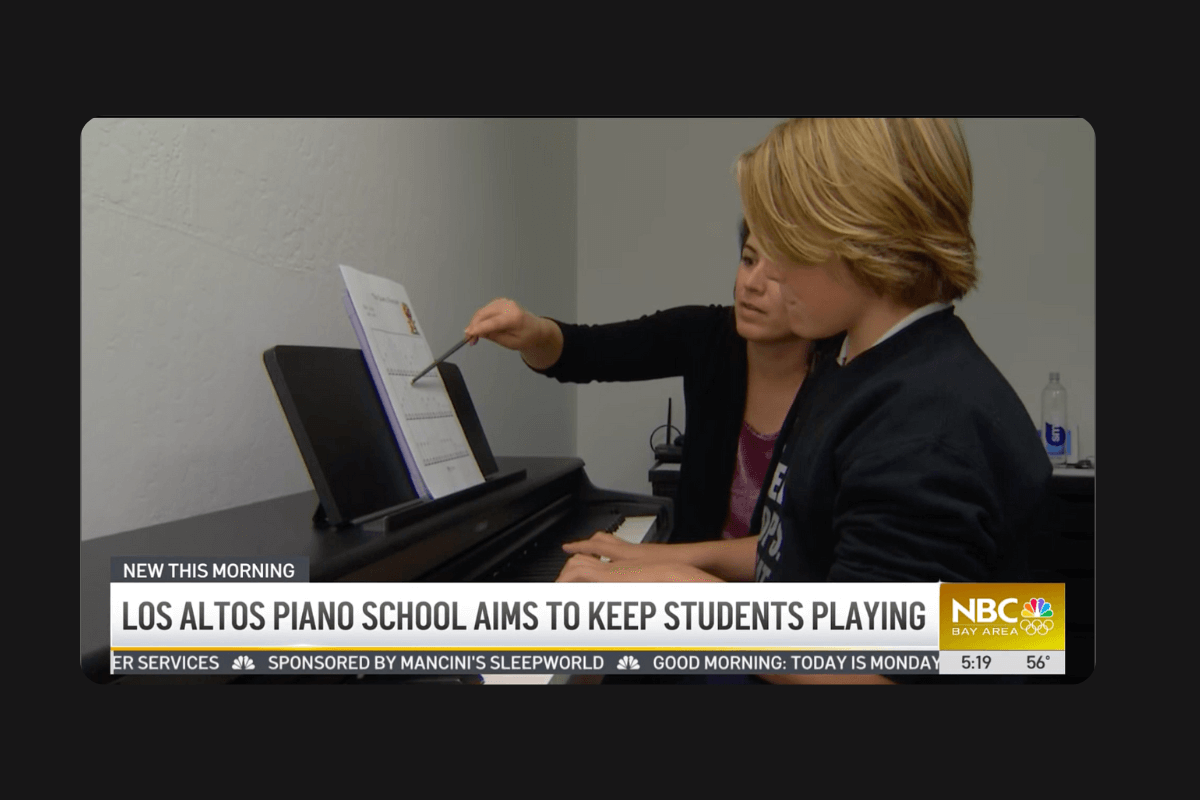How to pick the right piano lessons: Curriculum and method guide

Compare piano curriculums and methods to figure out the best way to learn piano
Choosing the right piano curriculum can make all the difference when learning to play, but understanding the differences between methods can be even more confusing than reading sheet music for the first time. With so many options available, each claiming to be the best approach, it's challenging to know which curriculum will truly be the right fit. Each method has its own philosophy, pacing, and approach to building fundamental skills, making the decision even more overwhelming. We wrote up a comprehensive comparison of five piano curricula, including the Payam Method, to help you make the best decision.
1. Payam Music Method
Summary
Clearly we’re biased, but the results speak for themselves: students learning 3x faster than traditional lessons, 97% of students continuing beyond the first year playing, and our students are being recognized with national awards. The Payam Music Method represents an innovative approach to piano education that combines the best elements of traditional methods with modern developmental psychology. Our curriculum emphasizes developing musical intuition alongside technical proficiency, using a carefully crafted curriculum progression that adapts to each student's individual learning style and pace. The method is rooted in language learning, making it a great way for new players to start playing piano.
Best for
- Students of all ages and skill levels
- Those who want a personalized, adaptive learning experience
- Students seeking both technical excellence and musical creativity
- Learners who benefit from positive reinforcement
- People who want to play the songs they know and love
- Students who previously quit because they were bored or wanted more leeway to compose
Pros
- Personalized approach: Both curriculum and teachers adapt to individual learning styles and paces
- Accessible for beginners: Alphanumeric notation makes it very easy for both children and adults to learn quickly
- Low barrier to entry: No piano knowledge is required to progress quickly
- Understand theory: Students comprehend theory by applying it, rather than memorizing
- Creative outlet: In addition to playing, students have option to learn to compose original music
- Holistic development: Balances technique, theory, creativity, and performance
- Flexible progression: Allows students to explore their musical interests while building fundamentals
- Comprehensive preparation: Prepares students for performances as well as original composition
- Engaging curriculum: Keeps students motivated through varied and personalized songs by not teaching from a book
- Strong foundation: Builds solid technical and theoretical groundwork
Cons
- Newer method: Less widespread recognition compared to established curricula
- Limited availability: Currently available only through instructors at Payam Music schools and online
- Requires specialized training: Teachers need specific preparation in the methodology to teach the Payam Method
2. Faber Piano Adventures (Piano Adventures)
Summary
The Faber Piano Adventures series, developed by Nancy and Randall Faber, emphasizes a balanced approach combining technique, theory, performance, and creativity. The curriculum is structured around age-appropriate levels and focuses on developing musicianship alongside technical skills. It features engaging artwork, popular songs, and a strong emphasis on interval reading and pattern recognition.
Best for
- Beginning students of all ages, especially kids
- Students who enjoy variety and creative expression
- Those who benefit from visual learning aids
- Students preparing for recreational piano playing
- Learners who respond well to structured yet flexible progression
Pros
- Well-rounded approach: Balances technique, theory, sight-reading, and creativity
- Age-appropriate materials: Separate books for different age groups with relevant content
- Strong theory foundation: Emphasizes understanding music theory from the beginning
- Engaging presentation: Colorful books with appealing artwork and familiar songs
- Teacher support: Excellent teacher resources and training materials
- Flexible pacing: Allows for individual student progression within the structure
Cons
- Can be overwhelming: Multiple books per level might feel like too much to some students
- Theory-heavy: Some students may find the theory component challenging initially
- Cost: Requires multiple books per level, increasing expense
3. Alfred Piano Method
Summary
Alfred is one of the most widely used piano methods, known for its systematic approach to reading music. The curriculum emphasizes note reading from the beginning, with a strong focus on traditional music notation and classical technique. It progresses through clearly defined levels with consistent reinforcement of fundamental skills.
Best for
- Students who want a traditional, structured approach
- Those planning to pursue classical piano seriously
- Students who learn well through repetition and drill
- Beginners who want to focus primarily on reading music
- Students preparing for formal examinations or competitions
Pros
- Strong reading foundation: Excellent for developing sight-reading skills
- Systematic progression: Clear, logical sequence of skill development
- Widely recognized: Familiar to most piano teachers
- Comprehensive: Covers all essential piano skills methodically
- Affordable: Generally less expensive than multi-book series
- Classical preparation: Good foundation for classical repertoire
Cons
- Can be dry: Some students find the approach less engaging
- Limited creativity: Less emphasis on improvisation and composition
- Slower initial progress: Students may feel they're not playing "real" music quickly enough
- Less variety: Fewer contemporary or popular music elements
- One-size-fits-all: Less accommodation for different learning styles
4. Hal Leonard Piano Method
Summary
Hal Leonard's approach focuses on making piano learning accessible and enjoyable through familiar songs and a gradual introduction to music reading. The method emphasizes playing by ear alongside reading skills and includes a wide variety of musical styles. It's designed to keep students motivated through recognizable repertoire.
Best for
- Students who are motivated by playing familiar songs
- Those who enjoy diverse musical styles (pop, rock, classical)
- Students who want to develop both reading and playing-by-ear skills
- Recreational players who want quick satisfaction
- Students who might be intimidated by traditional methods
Pros
- Motivating repertoire: Features popular and familiar songs
- Diverse styles: Includes various musical genres
- Balanced approach: Combines reading with ear training
- Student-friendly: Designed to maintain interest and motivation
- Flexible format: Available in various formats and arrangements
- Quick results: Students can play recognizable pieces relatively quickly
Cons
- Less systematic: May lack the structured progression of other methods
- Variable quality: Some arrangements may be simplified to the point of losing musical integrity
- Limited classical preparation: May not adequately prepare students for classical repertoire
- Copyright limitations: Some popular songs may be simplified due to licensing restrictions
- Less theory emphasis: May not develop theoretical understanding as thoroughly
5. Bastien Piano Method
Summary
The Bastien Piano Method, developed by James and Jane Bastien, uses a multi-key approach that introduces students to different key signatures from the beginning. The curriculum emphasizes pattern recognition, logical progression, and practical musicianship. It's designed to develop independent musicians who can think analytically about music.
Best for
- Students who learn well through pattern recognition
- Those who want to understand music theory practically
- Students who benefit from logical, sequential learning
- Learners preparing for both classical and contemporary music
- Students who prefer a moderate pace with solid foundations
Pros
- Multi-key approach: Introduces various keys early, reducing later difficulties
- Logical progression: Well-thought-out sequence of skill development
- Pattern recognition: Helps students understand musical relationships
- Balanced curriculum: Covers technique, theory, and repertoire effectively
- Teacher-friendly: Clear instructions and pedagogical guidance
- Solid foundation: Builds strong fundamental skills
Cons
- Less popular: May be harder to find teachers familiar with the method
- Potentially confusing: Multi-key approach might overwhelm some beginners
- Limited variety: Fewer contemporary or popular music elements
- Requires commitment: Benefits most apparent with consistent, long-term study
- Less engaging visually: May lack the appeal of more colorful, modern methods
Conclusion
While each piano curriculum has its merits, the Payam Music Method is the most flexible, comprehensive, and approachable. However, each method serves different types of students and learning goals. Consider your student's age, learning style, musical interests, and long-term objectives when choosing a method.
The traditional methods like Faber, Alfred, Hal Leonard, and Bastien each offer valuable approaches, but the Payam Music Method combines the best elements of these established curricula while offering personalized instruction and modern teaching techniques.
Piano is an excellent first instrument to learn. Regardless of what you choose, remember that “play” is the most important part of playing piano.
If the Payam Method sounds like the best fit, we invite you to sign up for a free trial lesson.




